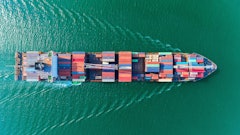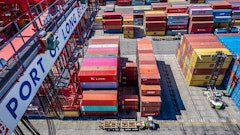
Research consultancy Forrester estimates that cross-border selling will make up 20 percent of e-commerce by 2022, and according to a 2018 whitepaper by logistics provider DHL Express, cross-border B2B transactions will reach $1.2 trillion within the next five years. To seize on the market opportunity, an accelerating number of B2B merchants are ramping up their e-commerce outreach to overseas customers.
However, successfully selling to an international audience requires more than just translating an existing online store into new languages. To get a better sense of how cross-border e-commerce is unfolding, Oro Inc., leaders in open-source business applications, recently polled its global community of B2B merchants and practitioners with a series of questions about their current and planned efforts internationally. The responses received in the 2018 B2B Cross Border Survey shed light on the status of cross-border selling and the key challenges merchants are facing as they gear up to tackle the opportunities.
Although an overwhelming majority (80 percent) of companies that participated in the survey had little experience selling to markets outside of their primary regions, that is clearly in the process of changing quickly. The survey made it clear that 75 percent of merchants are planning significant investments in international markets and consider them crucial to future growth. As important, most merchants felt that understanding local markets will be critical to succeeding in new areas, especially given crucial differences between markets in buying habits; logistics like shipping and customs requirements; and handling local policies, regulations and taxes.
The following article provides specific guidance around the critical elements of selling overseas and looks at the need for localization in cross-border e-commerce initiatives.
Personalized User Experience
A recent report by Common Sense Advisory found that 87 percent of consumers who have trouble reading English refuse to buy at English-only websites. So, a crucial first step is to translate your B2B e-commerce site into the local languages—not just literal translations, but localization of an entire site’s content in accordance with the vernacular the customer is accustomed to.
According to the survey, 66 percent of respondents identified personalization for local audiences as their greatest challenge in expanding internationally: the need to understand international buyers and local conventions relating to online user experience. For B2B e-commerce businesses to thrive, their online storefronts need to provide intuitive, personalized user interfaces: sites that allow buyers to complete the entire shopping process, from browsing products to completing the purchase, according to local norms. In industry terms, this is called “self-service functionality,” and it has become a critical success factor in both consumer and B2B e-commerce. Gartner has predicted that by 2020 customers will complete 85 percent of their online transactions with zero human interaction.
That self-service functionality can be achieved internationally only with effective regional adaptation. Using local measuring standards, offering discounts for regional holidays, and designing convenient and locally appropriate user experiences for specific international markets can help B2B merchants streamline sales processes and compete effectively with in-country brands.
Shipping and Customs
Shipping and customs regulations vary hugely from country to country—even more so for merchants whose products, such as aerosols or volatile liquids, are complicated to ship and distribute. In the 2018 B2B Cross-Border Survey, 41 percent of respondents said they think adapting to local shipping logistics and customs needs poses the biggest challenge to selling overseas.
Each foreign country and region has its own set of product classification systems for import tariffs. Failing to accurately describe the product category or affix the correct product code on international shipping containers can result in additional costs. It’s important for B2B online sellers to not only offer multiple shipping options but also to provide overseas customers with transparency into the charges that may accrue during delivery.
Taxation
In the United States, sales tax is typically charged at the final point of sale, so resellers and wholesalers are exempt from those fees. But more than 160 other countries in the world, including most of Europe, charge value-added tax (VAT) rather than sales tax, where taxes accrue at each point in the supply chain. This means that tax fees must be added to product prices and either paid for by merchants or passed on to customers. U.S. B2B merchants, accustomed to displaying prices independent of tax, need to show tax-inclusive pricing on European online storefronts. According to the survey, 45 percent of B2B merchants find VAT registration and filing in multiple countries to be their biggest challenge in terms of taxes and regulation.
B2B sellers often offer large and diverse product catalogs, presenting an even greater challenge to navigating complex tax codes and calculating individual tax rates for each product and service. Sellers need to regularly monitor tax rate changes, which can have a significant impact on product pricing and business bottom lines.
Local Law and Regulations
In the survey, 33 percent of respondents pointed to local laws and regulations as the biggest challenge for international B2B e-commerce. International markets and regions have variable rules and regulations governing product labeling, licensing and merchandising. For B2B merchants selling into regulated industries, such as medical devices or healthcare supplements, it is particularly important to check with a country’s regulatory bodies to see if products need to be licensed to sell. Additionally, some B2B product categories, like construction materials, refrigeration appliances and machinery equipment, are required to have health and safety certification called “CE marking” in European Union countries.
Individual countries’ trade protection policies can also affect businesses selling abroad. The government of Argentina, for instance, famously introduced new protective restrictions in 2014 limiting citizens to two purchases of goods from foreign e-commerce websites each year. When planning your international expansion strategy, it is crucial to study these local rules and regulations to avoid legal pitfalls and to select the right markets to target.






























